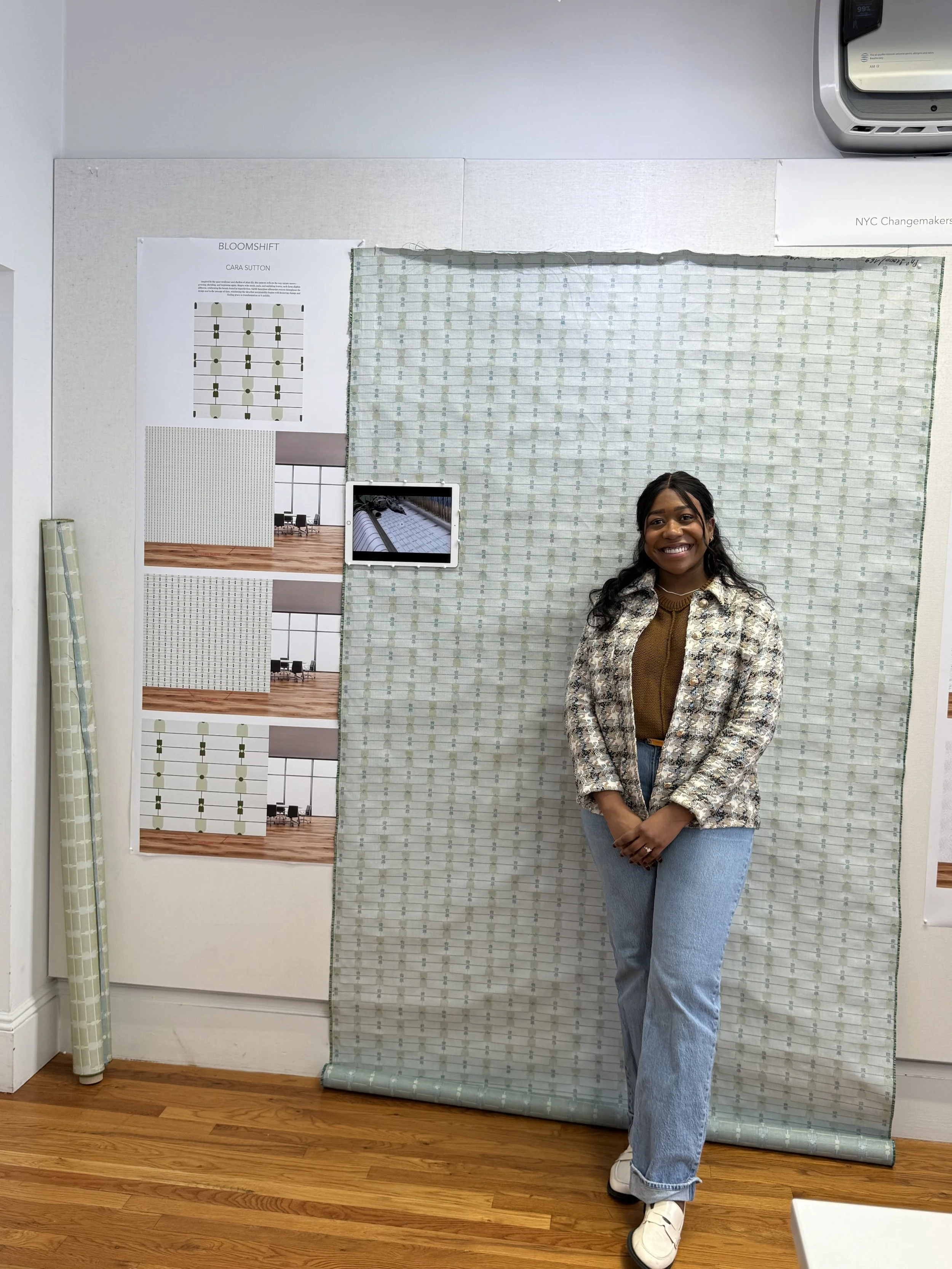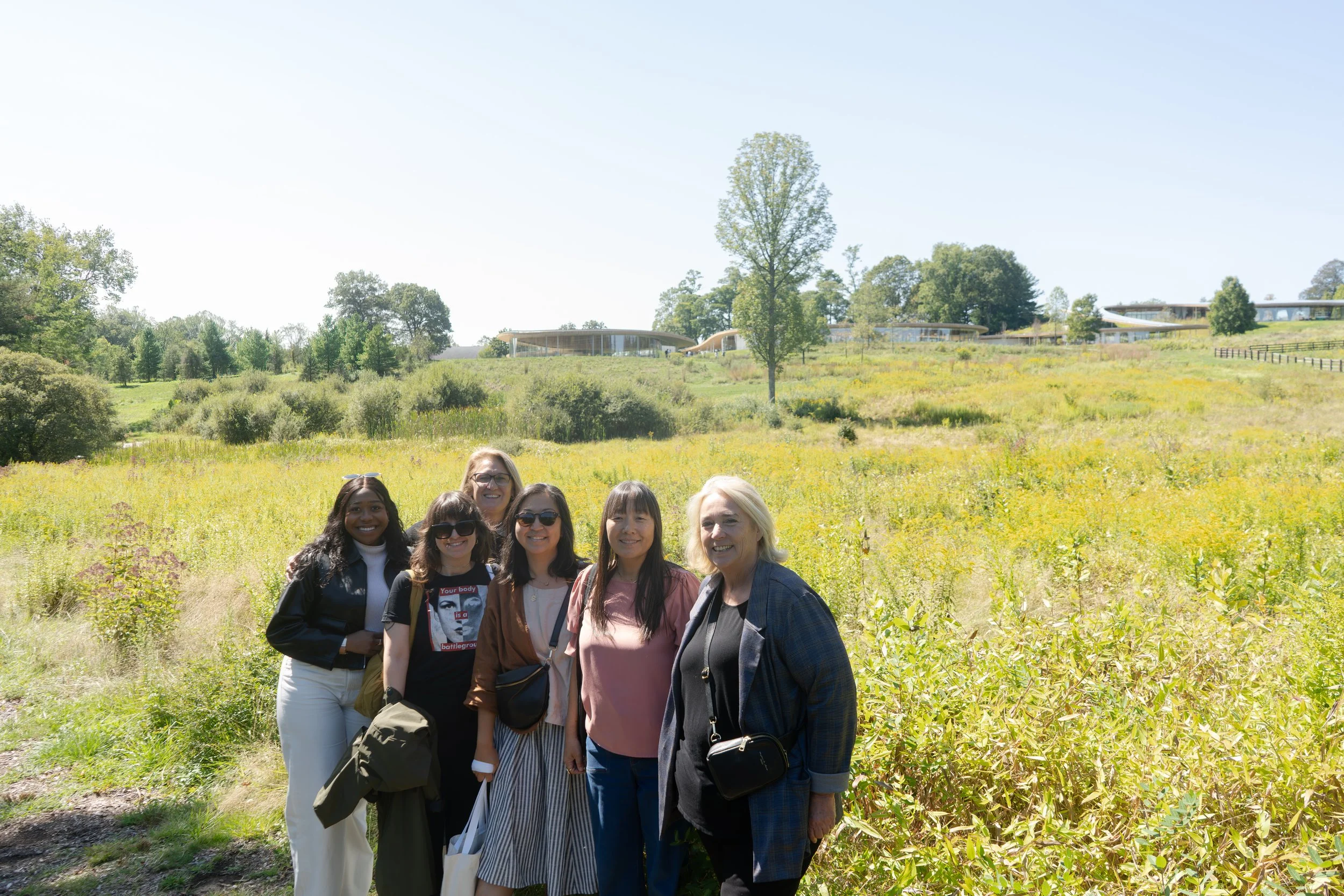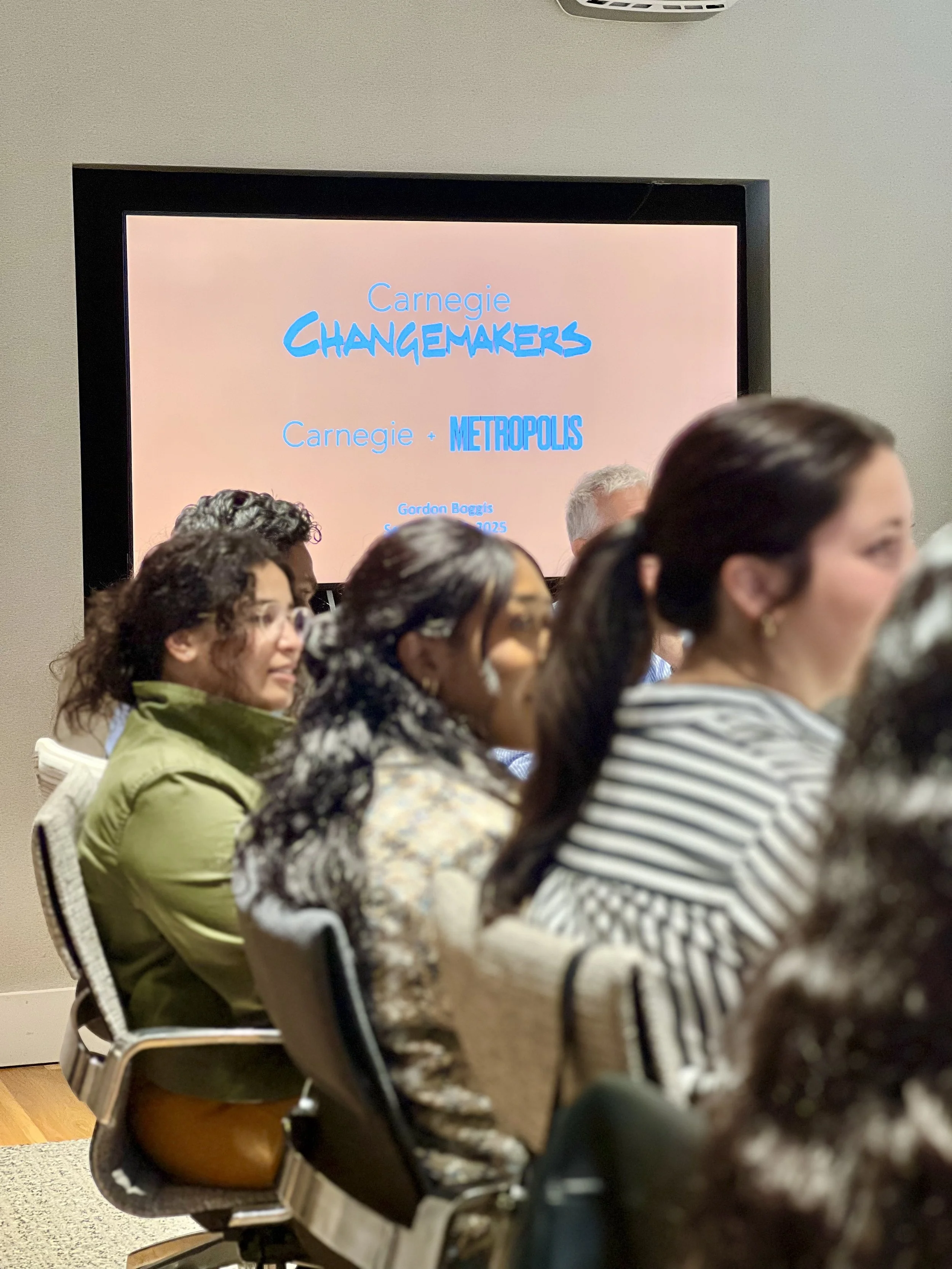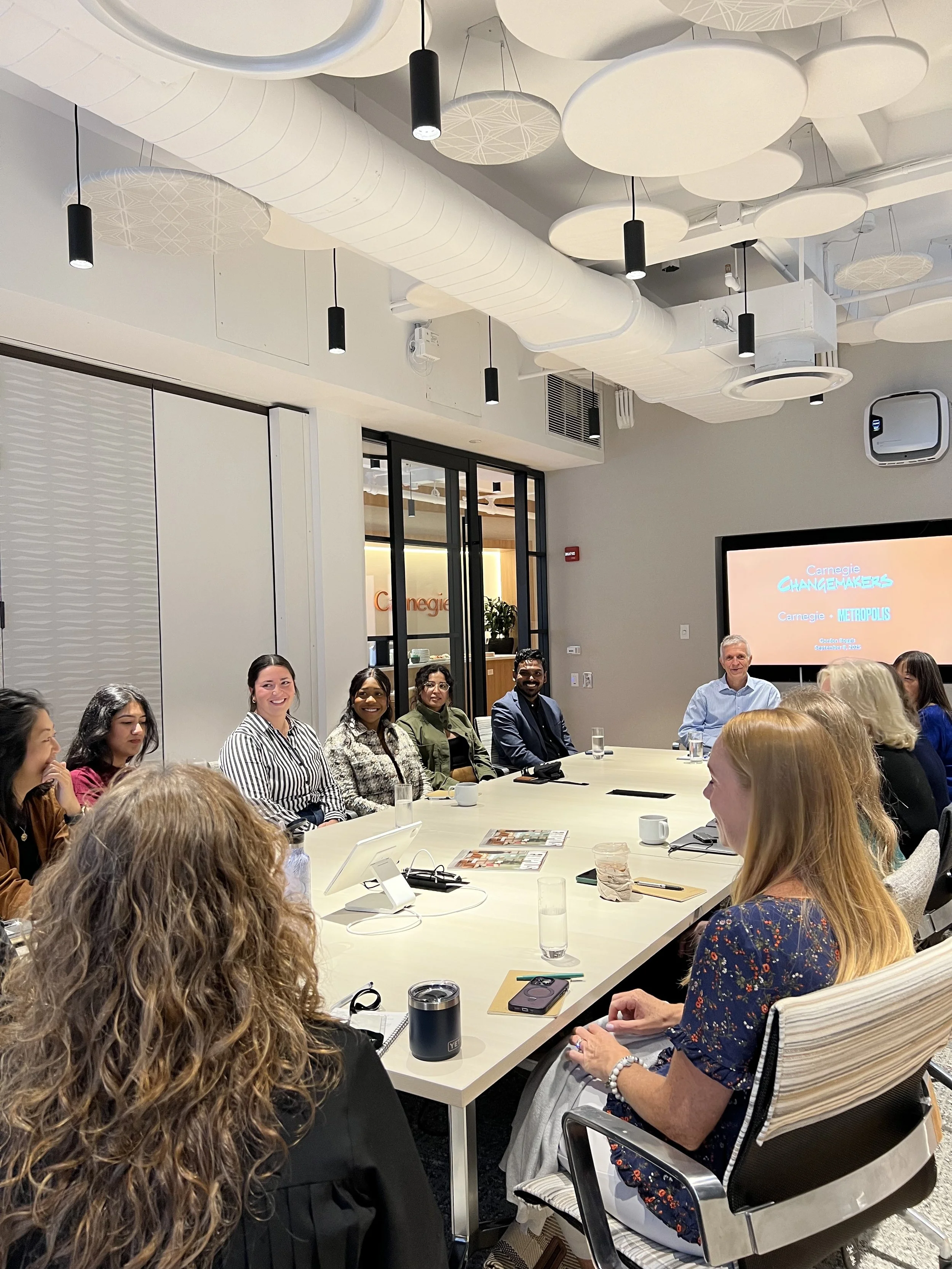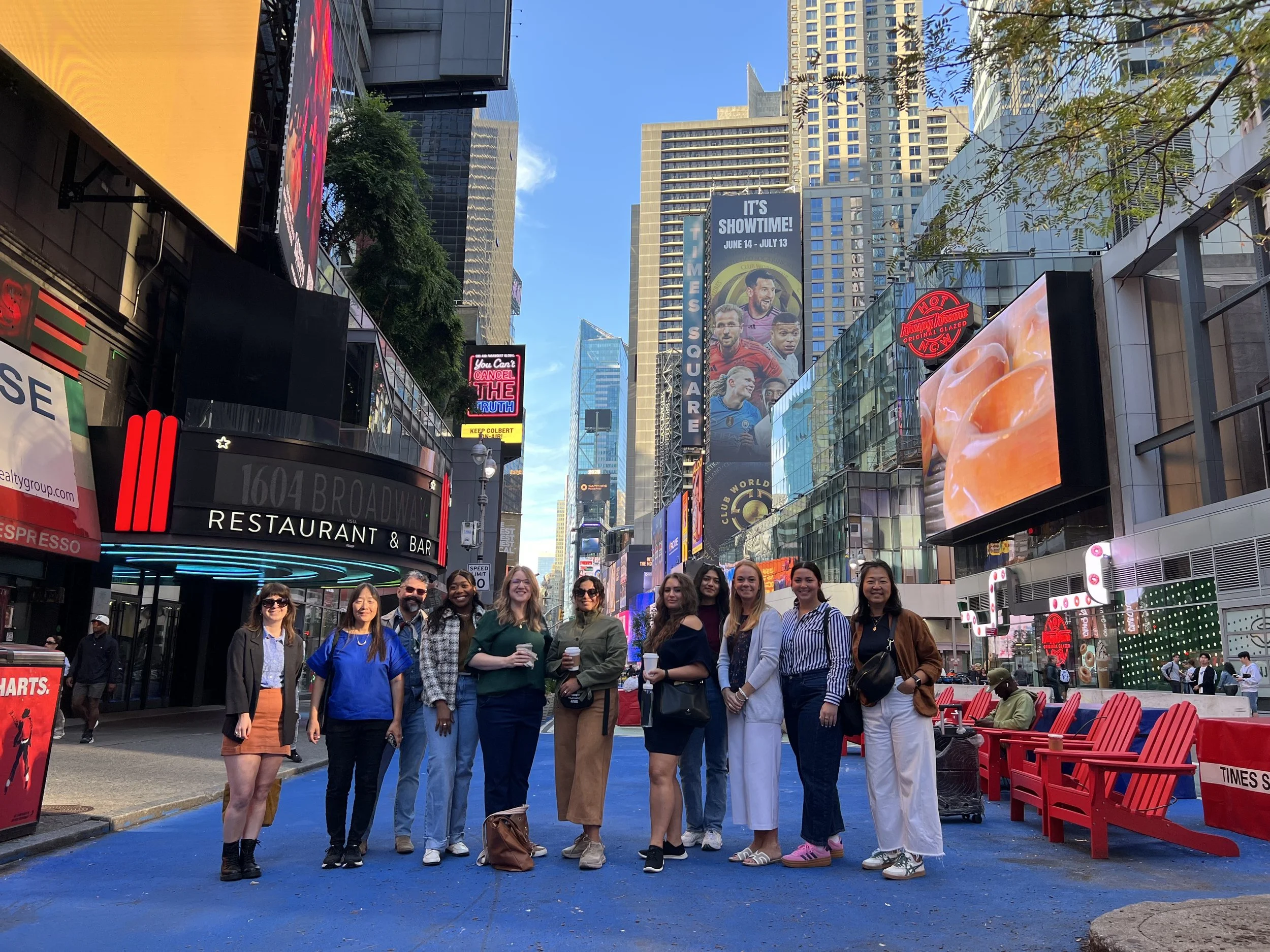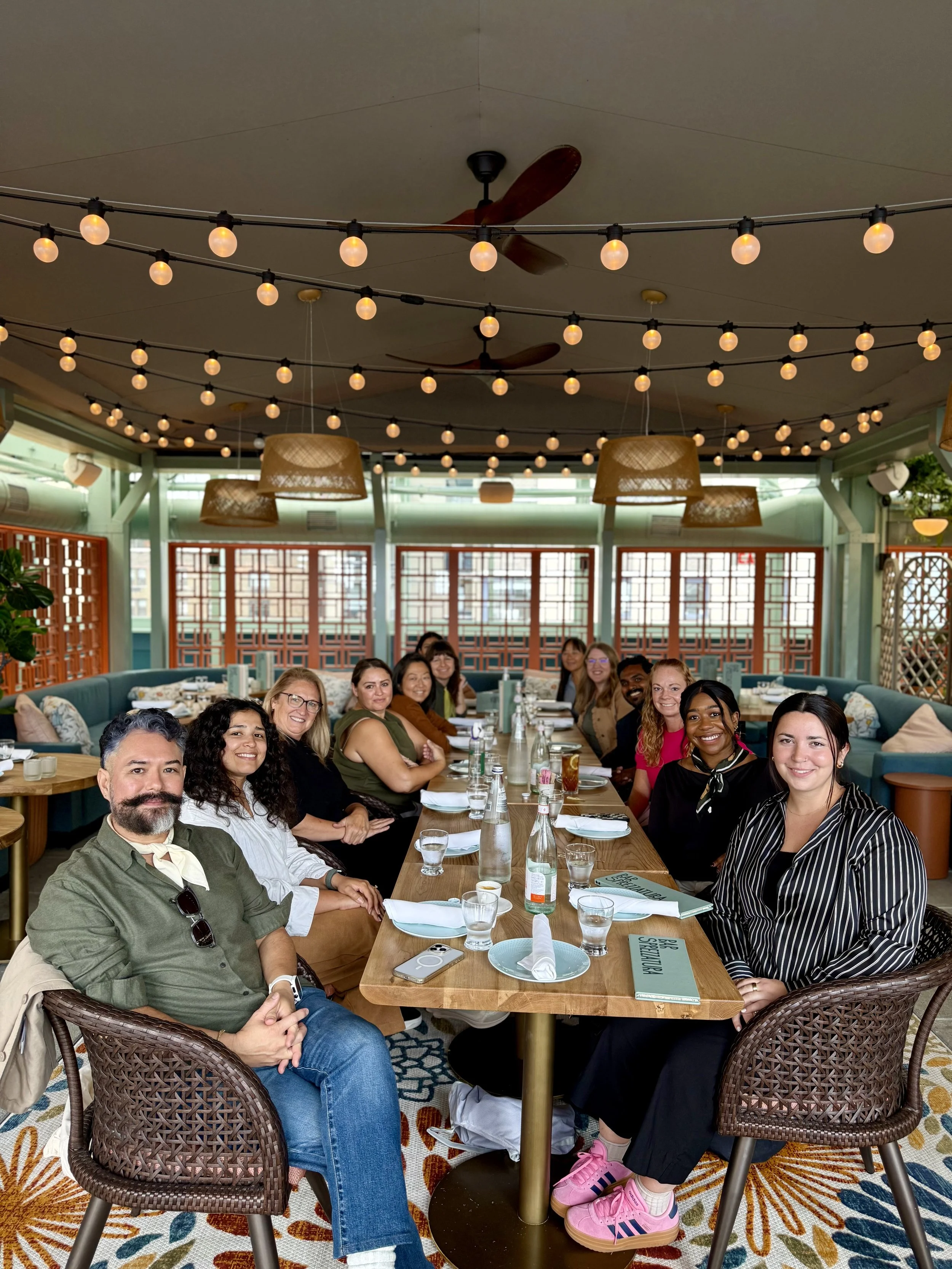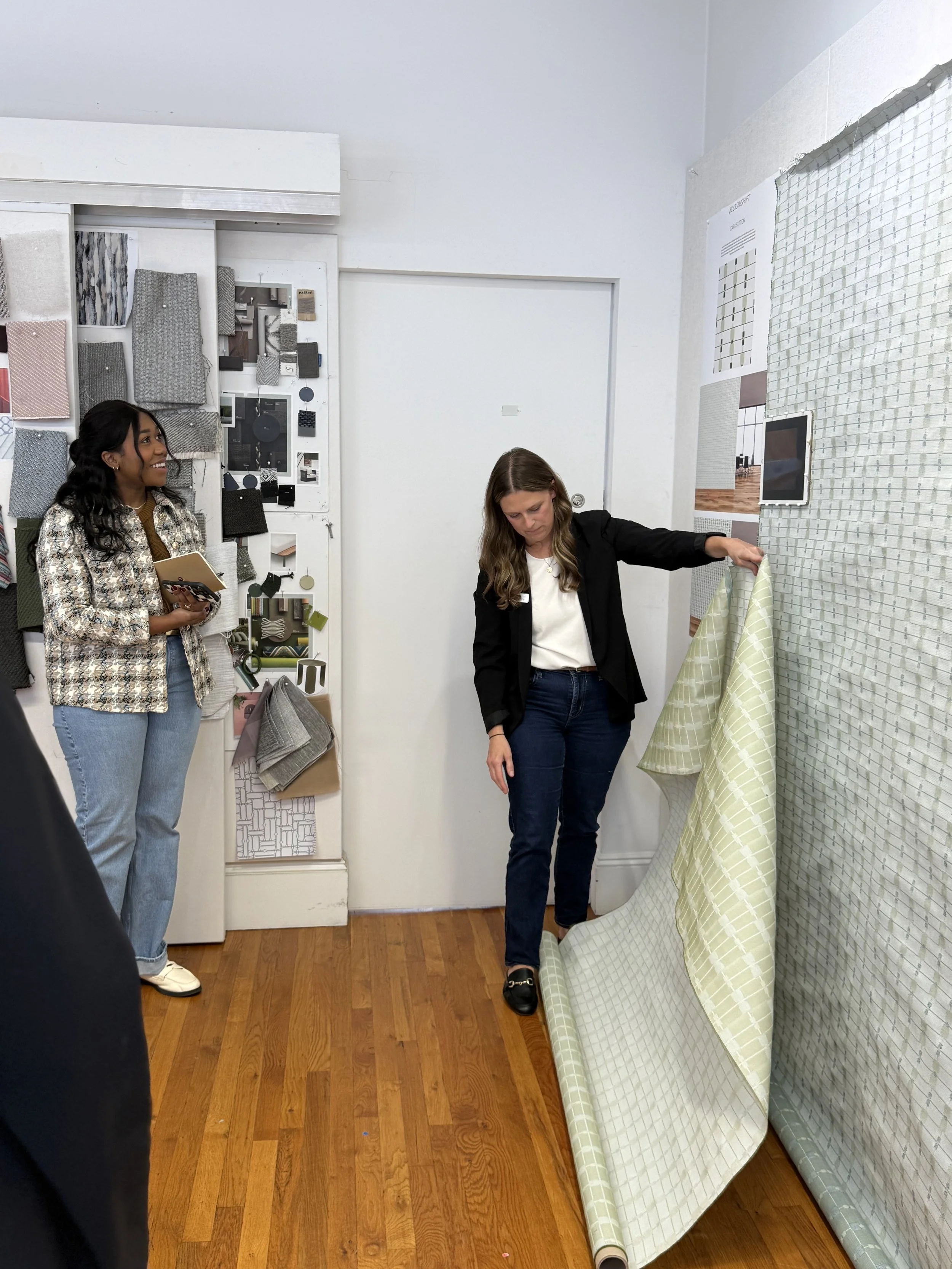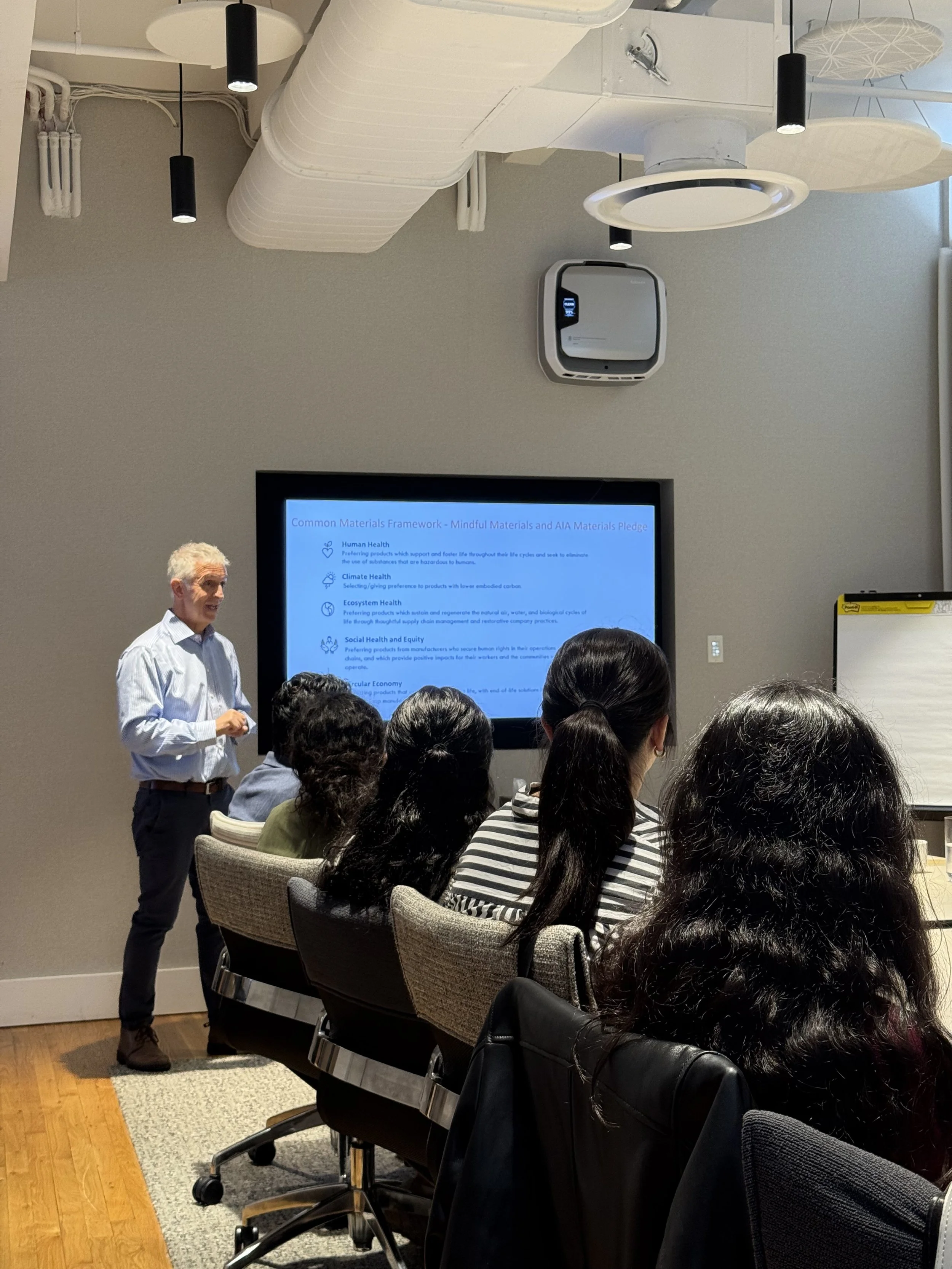Design for Change: Cara Sutton Represents Bockus Payne at the Carnegie Changemaker Experience
What does it mean to be a changemaker in design? For Designer, Cara Sutton, it means using creativity and conscience in equal measure—designing spaces that serve people, honor materials, and sustain the planet.
This fall, Cara was one of only ten designers and architects nationwide selected for the New York Changemaker Experience, an immersive program hosted by Carnegie Fabrics in partnership with Metropolis Magazine. The experience brought together emerging voices in the design industry for a deep dive into sustainability, ethical material sourcing, and design innovation.
“Being one of only ten interior designers and architects chosen from over 400 applicants is an incredible honor,” Cara shared. “It reinforces my belief in design’s power to drive meaningful change. It means using my voice and craft to bridge cultures, inspire connection, and design with deeper purpose.”
The program kicked off with presentations from Gordon Boggis, CEO of Carnegie Fabrics, and Avinash Rajagopal, Editor in Chief of Metropolis Magazine. Their sessions—“The Changemaker Framework” and “Designing for Impact”—set the tone for a week of collaboration and critical conversation on transparency, innovation, and sustainability in design.
Custom textile designed by Cara Sutton and prototyped by Carnegie
For Cara, the alignment between her own design values and Carnegie’s mission was immediate. “I try to implement sustainable materials and practices in every project,” she said. “Carnegie’s commitment to sustainability made me curious about their internal process—how they tailor design decisions to reduce impact and inspire industry-wide change.”
Throughout the experience, participants engaged in design challenges and hands-on workshops. Cara’s creativity stood out during a fabric design challenge, where her concept was one of two selected to be woven and prototyped by Carnegie. The announcement took place during a tour of the Carnegie showroom and creative studio—a moment Cara describes as both surreal and inspiring.
Beyond the studio, the group toured groundbreaking sustainable projects across New York City and Connecticut, including Grace Farms, 505 State Street (the city’s first all-electric skyscraper), and the Khalil Gibran International Academy, the first Passive House certified public school in NYC. From early-morning coffee with fellow changemakers to late-evening conversations over dinner, each day reflected the city’s energy and the program’s purpose.
Her key takeaway? “Design for impact begins with transparency—understanding where our materials come from and the hands that shape them,” Cara reflected. “Every choice we make as designers and architects has ripple effects on people, the planet, and future generations.”
Back at home, Cara is translating her insights into action—incorporating the ‘Design for Freedom’ and ‘Changemaker Framework’ principles into future projects. By guiding specifications and material selections with greater focus on ethical sourcing and sustainability, she hopes to help our team design spaces that not only serve people but also honor the environment and the story behind every material we touch.
Programs like the Changemaker Experience are essential, Cara believes, because they connect emerging designers with the leaders shaping the future of sustainability, innovation, and equity. They cultivate mentorship, spark collaboration, and inspire a shared purpose—to use design as a force for good.
This opportunity also reflects the culture that drives our firm: a belief that design should elevate communities and create lasting, positive impact.


